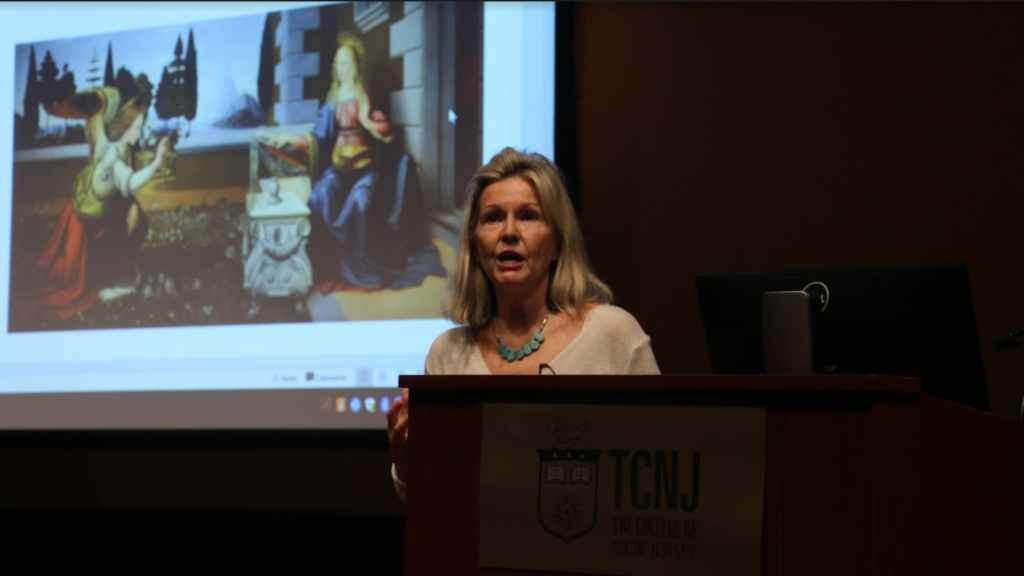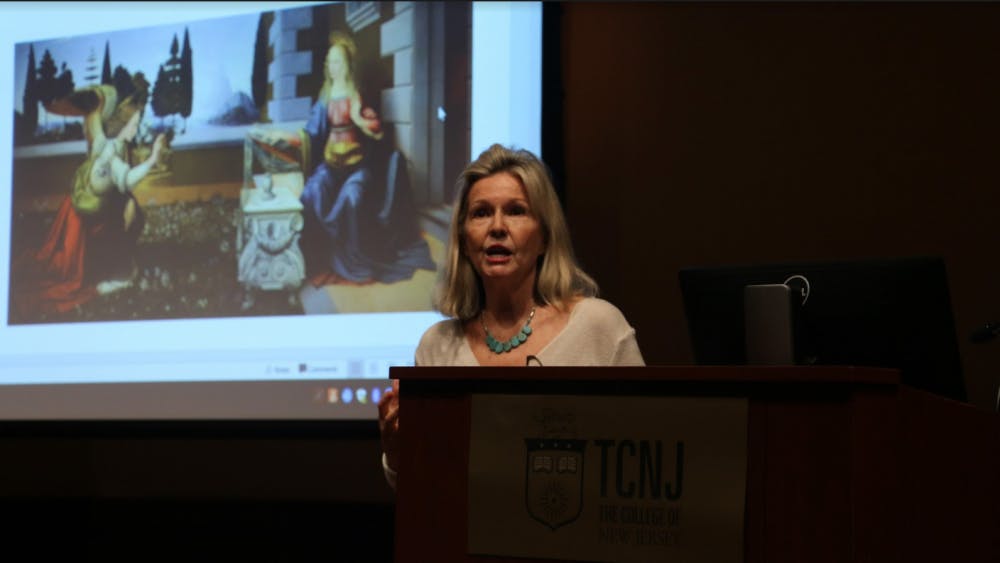By Lara Becker
Arts & Entertainment Editor

Students from the College’s Italian classes and the Italian Club gathered in the Library Auditorium on Oct. 16 to uncover the rich history of Leonardo Da Vinci through an insightful lecture.
Croatia native Snjezana Smodlaka prepared a guided powerpoint presentation to transport students back to the times of the 14 and 1500’s, when Da Vinci thrived in his life and with his art.
Through a generous introduction, David Stillman, an assistant professor of Spanish, told the audience of Smodlaka’s illustrious career educating on the arts and sciences. Smodlaka is a published writer regarding her teachings, and has studied and taught across Italy, Spain and Germany.
Da Vinci died 500 years ago on May 2, 1519, at the age of 67. Born in 1452, Da Vinci started out young, as he had works commissioned by age 15 and had a concept of divinity and beauty that he would continue to cultivate for years on end.
In paintings such as “The Baptism of Christ” and many more, he left his work unfinished and was never satisfied, especially when it came to portraying holy beings.
Similar to historians, Smodlaka spent much time theorizing details about how Da Vinci could have looked, sounded and behaved in real life.
Artists such as Andrea del Verrocchio have created pieces that are said to be a physical representation of Da Vinci. Verrocchio’s “David” sculpture aligns with the common belief of Da Vinci’s long hair, height and attractive qualities.
Of this, Smodlaka noted his “great physical beauty and strength; he always wanted to appear younger.”
He also described Da Vinci’s fascination with flying, which took form in many of his early sketches, such as “Design of a Glider” and “Annunciation.”
“His dream of seeing a person fly almost became an obsession,” said Smodlaka, whether this portrayed flying instruments, birds or angels.
This also led Da Vinci to try new techniques, such as combining linear and aerial perspectives to define these larger-than-life ideas.
Da Vinci was famous for taking his vast knowledge and translating it into brand new approaches to his painting style.
He pioneered the “sfumato” technique, which showcased blurred visions of objects and air, using misty and dreamy scopes rather than specific pictures. He accomplished this approach by applying several layers of paint to produce masterful changing and morphing between colors.
“He was the guy who did not accept (the old way of doing things.) He always wanted to experiment with a new medium for every painting,” Smodlaka said.
His work also stemmed from connection to his own personal traumas. A common theme of Da Vinci’s work was shifty eyes in his portrayal of people’s faces. In six or more of his paintings, misaligned eyes were shown.
Historians believe that Da Vinci himself was cross-eyed, and therefore wanted to normalize this ailment through his beautiful artwork.
“He couldn’t see the world two-dimensionally, he saw things ahead of time and space in a three-dimensional way,” Smodlaka said of Da Vinci using the eye technique to his advantage in his work.
Along with this physical assessment of individuals in his art, Da Vinci also spearheaded anatomically accurate representations of the human body, which pioneered the convergence of anatomy, art and spirituality.
Smodlaka noted how Da Vinci “used his anatomical studies underneath the painting of the skin the create accurate art,” which was first cited in his famous “St. Jerome In the Wilderness.”
This followed Da Vinci’s passion to take his time in everything that he did, even if that sometimes came to the detriment of public opinion.
For example, to the dismay of many of his colleagues, “The Last Supper” took Da Vinci four years to complete, which was difficult for many people to understand.
The long time frame also occurred with his most famous creation, the “Mona Lisa,” which Smodlaka described as being constructed vision of the idealized woman. The “Mona Lisa” is also famously unfinished, as Da Vinci was never convinced of its completion.
“He was always striving for perfection after perfection. He couldn’t paint so fast –– he needed time to sit and think first,” Smodlaka said.
Freshman computer science major Erin Mooney, who attended the lecture as credit for her Italian 103 course, enjoyed hearing some details about Da Vinci that were both new and familiar to her.
“I thought it was interesting how the Renaissance paintings were idealistic, but within that idealism, they still painted the crossed eyes in so many paintings,” she said.
Perhaps the best description of Da Vinci is that magnificence took time. Through his life and his work, he transcended his craft in every possible way.
“In the normal course of events, many men and women are born with various remarkable qualities and talents, but only occasionally, the heavens send us someone who is not only human, but divine,” said Smodlaka quoting Giorgio Vasari, a famous biographer of artists.







